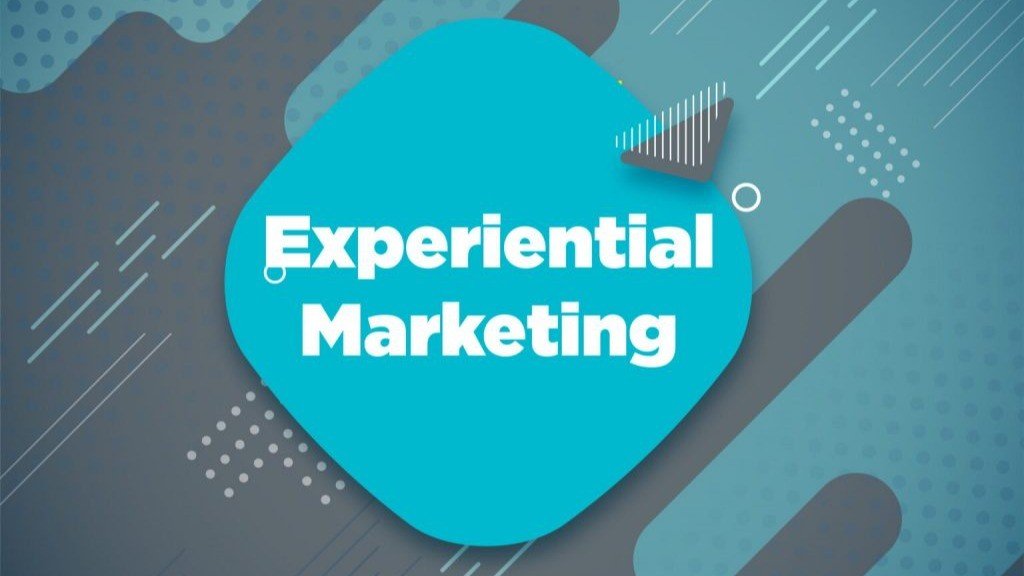The Experiential Edge: Strategizing Innovation in Mumbai Real Estate Marketing Landscape Mumbai, a city pulsating with dreams and aspirations, boasts a dynamic and fiercely competitive real estate market.
In this environment, traditional marketing strategies often fade into the background noise, struggling to capture the attention of discerning buyers and investors. To truly stand out and forge meaningful connections, real estate developers and marketing agencies in Mumbai need to recognize the power of experiential marketing.
This innovative approach moves beyond simply showcasing properties; it immerses potential customers in carefully crafted experiences that evoke emotions, build lasting impressions, and ultimately drive conversions.
This article delves into the burgeoning significance of experiential marketing in Mumbai’s real estate sector.
We will explore its core principles, examine diverse examples of its successful implementation, and provide a framework for strategizing innovative experiential campaigns that resonate with the city’s unique demographics and aspirations.
The Limitations of Traditional Real Estate Marketing in Mumbai is real estate consumer is bombarded with information – glossy brochures, online listings, newspaper advertisements, and hoardings vying for their attention. While these methods still hold a degree of relevance, they often lack the emotional connection and tangible engagement that truly influences decision-making, especially for high-value investments like property.
- Information Overload: The sheer volume of marketing messages leads to information fatigue and reduced impact.
- Lack of Differentiation: Many properties are presented similarly, making it difficult for individual projects to stand out.
- Passive Engagement: Traditional methods are largely one-way, failing to actively involve potential buyers in the brand story.
- Difficulty in Conveying Lifestyle: Static visuals and text struggle to effectively communicate the lifestyle and community aspects of a property.
- Erosion of Trust: In a market with varying levels of transparency, building trust requires more than just promotional material.
The Rise of Experiential Marketing: Creating Meaningful Connections Experiential marketing, at its heart, is about creating memorable and engaging interactions between a brand and its target audience. It shifts the focus from simply telling consumers about a product to allowing them to experience it firsthand. In the context of real estate, this translates to crafting immersive encounters that go beyond the typical property viewing.
Core Principles of Experiential Real Estate Marketing:
- Sensory Engagement: Appealing to multiple senses – sight, sound, smell, touch, and even taste – to create a richer and more impactful experience.
- Emotional Connection: Evoking positive emotions and aspirations associated with owning a particular property or lifestyle.
- Active Participation: Encouraging potential buyers to actively engage with the property, the brand, and the envisioned lifestyle.
- Personalization: Tailoring experiences to resonate with the specific needs and preferences of different target segments.
- Storytelling: Weaving a compelling narrative around the property and the lifestyle it offers, making it more relatable and aspirational.
- Authenticity: Creating genuine and credible experiences that build trust and foster long-term relationships.
Examples of Innovative Experiential Marketing in Mumbai Real Estate: Here are some examples of innovative strategies and their potential implementation:
- Immersive Property Showcases: Virtual Reality (VR) and Augmented Reality (AR) Tours: Moving beyond static images and videos, VR allows potential buyers to virtually walk through a property from the comfort of a sales office or even their own home. AR can overlay digital information onto physical spaces, showcasing furniture layouts, design options, and neighborhood amenities.
Example: A developer launching luxury apartments in Bandra could offer prospective buyers VR headsets that provide a realistic walkthrough of different unit configurations, including views from balconies at various times of the day. AR applications could allow them to visualize how their furniture would fit into a show apartment.
- Interactive Model Homes with Sensory Elements: Instead of traditional static models, developers can create interactive spaces that engage multiple senses. This could include ambient lighting that changes throughout the day, curated soundscapes that reflect the neighborhoods vibe, and even subtle scents that evoke a sense of home.
Example: For a family-oriented development in Thane, a model home could feature interactive screens showcasing local schools and parks, the aroma of freshly baked cookies, and the sounds of children playing in a nearby park, creating an emotional connection to family life.
- Pop-Up Experience Centers in High-Footfall Locations: Setting up temporary, visually engaging experience centers in malls, business districts, or cultural hubs can reach a wider audience and generate buzz. These centers can offer a glimpse into the project through interactive displays, virtual tours, and personalized consultations.
Example: A developer launching weekend homes in Lonavala could set up a pop-up experience center in a popular Mumbai mall, featuring large-screen displays showcasing the scenic beauty, interactive maps of the location, and even the aroma of fresh mountain air. 2.
- Lifestyle-Focused Events and Workshops: Curated Events Aligned with Target Demographics: Organizing events that resonate with the lifestyle aspirations of the target audience can create a strong emotional connection. This could include art exhibitions for luxury buyers, yoga and wellness workshops for health-conscious individuals, or cooking demonstrations for families.
Example: For a premium residential project in South Mumbai, the developer could host an exclusive art exhibition featuring renowned local artists, attracting potential buyers who appreciate culture and sophistication.
- Interactive Workshops and Seminars: Offering informative and engaging workshops related to homeownership, interior design, or financial planning can position the developer as a trusted advisor and attract serious buyers.
Example: A developer launching first-time homebuyer-focused apartments in a developing suburb could host workshops on navigating the home loan process and understanding property registration, providing valuable information and building trust.
- Community-Building Initiatives: Organizing pre-launch events that foster a sense of community among potential residents can be highly effective. This could include neighborhood picnics, cultural performances, or even collaborative design workshops.
Example: For a large-scale township project, the developer could organize a founders day event where early buyers can interact with each other, participate in tree-planting initiatives, and get a feel for the community they will be joining.
Digital and Social Media Experiences:
- Interactive Social Media Campaigns: Moving beyond static posts, developers can create interactive content like polls, quizzes, contests, and behind-the-scenes glimpses of the development process. User-generated content campaigns, where potential buyers share their aspirations for their dream home, can also be powerful.
Example: A developer could run an Instagram contest asking users to share their vision of their ideal Mumbai home using a specific hashtag, offering a prize like a personalized interior design consultation.
- Personalized Online Journeys: Utilizing data analytics to understand user behavior and preferences can enable developers to create personalized online experiences. This could include tailored website content, targeted email campaigns, and customized virtual tours based on individual interests.
Example: A user browsing luxury penthouses on a developers website could be shown more detailed information about high-end amenities and exclusive neighborhood features, while a user looking at smaller apartments might see content focused on affordability and connectivity.
- Influencer Marketing and Collaborations: Partnering with relevant lifestyle influencers and content creators can help reach a wider and more engaged audience. Authentic collaborations that showcase the lifestyle associated with the property can be particularly impactful.
Example: A developer launching family-friendly villas could collaborate with popular parenting bloggers to create content showcasing the child-friendly amenities and community spirit of the project.
Experiential Sales and Customer Engagement:
- Personalized Site Visits and Discovery Sessions: Moving beyond standard property tours, sales teams can create personalized discovery sessions that focus on understanding the individual needs and aspirations of each potential buyer. This allows them to tailor the experience and highlight the features that are most relevant.
Example: Instead of a generic tour, a sales representative could ask a young couple about their lifestyle, work commute, and future family plans, and then showcase the specific aspects of the property and neighborhood that align with their needs. Day in the Life Experiences: Offering potential buyers a glimpse into what it would be like to live in the property or the neighborhood can be incredibly powerful. This could involve arranging visits during different times of the day to experience the ambiance, showcasing local amenities, or even arranging meetings with future neighbors (with their consent).
Example: For a senior living community, a developer could offer prospective residents a day pass to experience the facilities, participate in activities, and interact with current residents.
- Post-Sales Engagement and Loyalty Programs: Extending the experiential approach beyond the point of sale can foster strong customer relationships and generate positive word-of-mouth. This could include exclusive events for homeowners, personalized move-in assistance, and community-building initiatives.
Example: A developer could organize regular social gatherings for residents, offer workshops on home maintenance, or create a dedicated online platform for residents to connect and share information.
Strategizing Innovative Experiential Marketing Campaigns in Mumbai: Developing effective experiential marketing strategies requires a deep understanding of the target audience, the unique selling propositions of the property, and the overall marketing objectives.
Here’s a framework for strategizing innovative campaigns in the Mumbai context:
1. Define Your Target Audience: Conduct thorough research to understand the demographics, psychographics, lifestyle aspirations, and pain points of your ideal buyer. Segment your audience based on their specific needs and motivations (e.g., young professionals seeking connectivity, families prioritizing schools and green spaces, investors looking for high returns).
2. Identify Your Unique Selling Proposition (USP): Clearly articulate what makes your property or development stand out from the competition. This could be its location, design, amenities, community features, or the lifestyle it offers. Focus your experiential marketing efforts on highlighting and bringing your USP to life.
3. Define Your Marketing Objectives: What do you want to achieve with your experiential marketing campaign? Is it to generate leads, increase brand awareness, drive sales, or build long-term customer relationships? Set measurable goals to track the success of your initiatives.
4. Brainstorm Experiential Concepts: Based on your target audience, USP, and objectives, brainstorm creative and engaging experiential concepts that will resonate with your audience. Consider different formats, including physical events, digital experiences, and hybrid approaches. Think about how you can leverage sensory elements, storytelling, and active participation to create memorable moments.
5. Select the Right Channels and Platforms: Choose the channels and platforms that your target audience frequents. This could include social media, online events platforms, physical event spaces, and collaborations with relevant businesses or influencers. Ensure a seamless and integrated experience across all touchpoints.
6. Develop a Detailed Implementation Plan: Outline the specific activities, timelines, budgets, and resources required for your campaign. Assign responsibilities and ensure clear communication among all stakeholders.
7. Measure and Evaluate Results: Track key metrics such as lead generation, website traffic, social media engagement, brand sentiment, and sales conversions. Gather feedback from participants to understand what worked well and what could be improved. nbsp; Use the data to refine your future experiential marketing strategies.
Conclusion: In the bustling metropolis of Mumbai, where the real estate landscape is constantly evolving, standing out requires more than just showcasing bricks and mortar. Experiential marketing offers a powerful avenue for developers to forge deeper connections with potential buyers, evoke emotions, and create lasting impressions. By strategically implementing innovative experiences that engage the senses, tell compelling stories, and foster a sense of community, Mumbai’s real estate marketers can move beyond the transactional and build genuine relationships that drive conversions and cultivate brand loyalty in this dynamic and aspirational market. The experiential edge is no longer a luxury; it is becoming a necessity for those who seek to truly capture the hearts and minds of Mumbai’s discerning property seekers.


